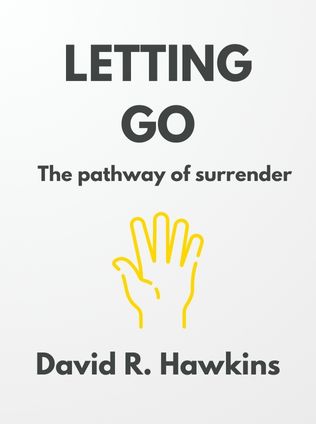
Letting Go
By David R. Hawkins
Published 05/2008
About the Author
David R. Hawkins was born in 1927 and passed away in 2012, leaving behind a legacy that extends far beyond the confines of psychiatry. Although he was a psychiatrist by profession, known for his work in treating schizophrenia and addiction, Hawkins’ influence permeated into the realms of philosophy and spirituality. He was a pioneer in integrating holistic health practices that encompassed physical, mental, and spiritual wellness, making significant contributions to the understanding of human consciousness.
Hawkins was a prolific author and speaker, and his work has inspired countless individuals worldwide. His books, including Power vs. Force, Healing and Recovery, and Truth vs. Falsehood, explore the intricate connections between consciousness, energy, and human potential. He presented his research and ideas at numerous conferences and appeared on popular media platforms, including Oprah Radio, where he discussed the nature of human consciousness and the path to spiritual awakening.
Hawkins’ teachings are characterized by their unique blend of scientific rigor and spiritual wisdom. He believed that understanding the energy of emotions and learning to release negative emotional energy could transform lives. His work continues to resonate with those seeking deeper understanding and personal growth, offering insights that are both profound and practical.
Main Idea
In Letting Go, David R. Hawkins presents a transformative approach to dealing with negative emotions that hinder personal growth and well-being. The central thesis of the book is that by learning to release unhelpful emotions—such as fear, anger, and grief—we can achieve a state of inner peace and happiness that is not dependent on external circumstances. Hawkins explains that emotions have different energy frequencies, with higher frequencies corresponding to positive emotions like love and peace, and lower frequencies associated with negative emotions.
Hawkins argues that most people carry these unhelpful emotions throughout their lives because they do not know how to release them. Instead, they either suppress them, distract themselves from them, or express them in ways that do not resolve the underlying issues. The process of letting go involves fully experiencing the emotion, without resistance or judgment, and allowing it to dissipate naturally. This practice not only leads to emotional and mental well-being but also enhances physical health, strengthens relationships, and promotes personal success.
Table of Contents
- Introduction
- How We Avoid Dealing With Emotions
- The Process of Releasing Unhelpful Emotions
- The Benefits of Releasing Unhelpful Emotions
- The Energy of Emotions
- High-Frequency Emotions
- Conclusion
Introduction
David R. Hawkins begins Letting Go by addressing the pervasive problem of negative emotions that many people experience throughout their lives. These emotions, whether rooted in past traumas, current anxieties, or fears about the future, create barriers to achieving personal fulfillment and happiness. Hawkins notes that the common approaches to dealing with these emotions—such as avoidance, suppression, and expression—are often ineffective and can lead to further emotional distress.
Hawkins introduces the concept of letting go as a simple yet profound solution. Instead of resisting or trying to control our emotions, we should allow ourselves to fully experience them and then release them. This process, Hawkins argues, is the key to attaining a state of inner peace and well-being. The idea is based on the understanding that emotions are transient and that by letting go of them, we can free ourselves from their influence and open ourselves to more positive emotional experiences.
Hawkins likens the process of letting go to the natural rise of a beach ball when released from being held underwater. The harder we try to suppress our emotions, the more pressure builds up, but when we let go, the emotions naturally dissipate, leaving us with a sense of relief and freedom. This metaphor serves as a powerful reminder of the simplicity and effectiveness of the letting-go process.
How We Avoid Dealing With Emotions
Hawkins explains that people typically avoid dealing with their emotions in three primary ways: through distraction, suppression, and expression. Each of these methods provides temporary relief but fails to address the underlying emotional energy, which continues to affect our overall well-being.
Method #1: Avoiding Emotions Through Distraction
In the modern world, distractions are everywhere. From social media to television, work, and other activities, there are countless ways to avoid confronting uncomfortable emotions. Hawkins argues that while these distractions may offer short-term relief, they do not resolve the underlying emotional issues. The emotions remain buried, draining our energy and preventing us from fully engaging with life.
One of the key insights Hawkins provides is the long-term consequences of distraction. By constantly distracting ourselves, we are not only avoiding our emotions but also missing out on opportunities for growth and self-improvement. The energy we use to avoid our feelings could be better spent confronting and releasing them, leading to improved mental and physical health.
For example, consider a person who feels deep sadness but avoids it by constantly checking their phone. While this might provide a temporary escape from the sadness, the emotion lingers, manifesting in subtle ways such as irritability, fatigue, or even physical symptoms like headaches. Over time, this avoidance can lead to more significant issues, such as chronic stress or depression.
Sign up for FREE and get access to 1,400+ books summaries.
You May Also Like
The Subtle Art of Not Giving a F*ck
A Counterintuitive Approach to Living a Good Life
By Mark MansonRich Dad Poor Dad
What the Rich Teach Their Kids About Money - That the Poor and Middle Class Do Not!
By Robert T. KiyosakiHow To Win Friends and Influence People
The All-Time Classic Manual Of People Skills
By Dale CarnegieFreakonomics
A Rogue Economist Explores the Hidden Side of Everything
By Steven D. Levitt and Stephen J. Dubner



















